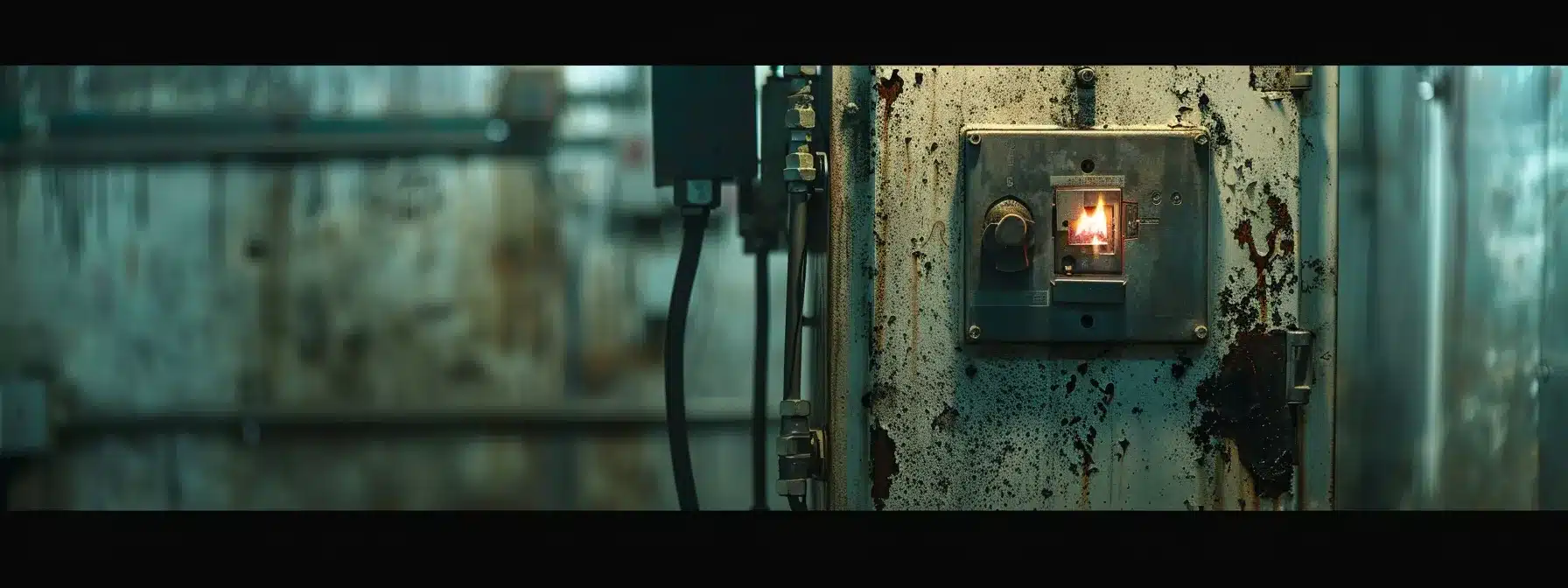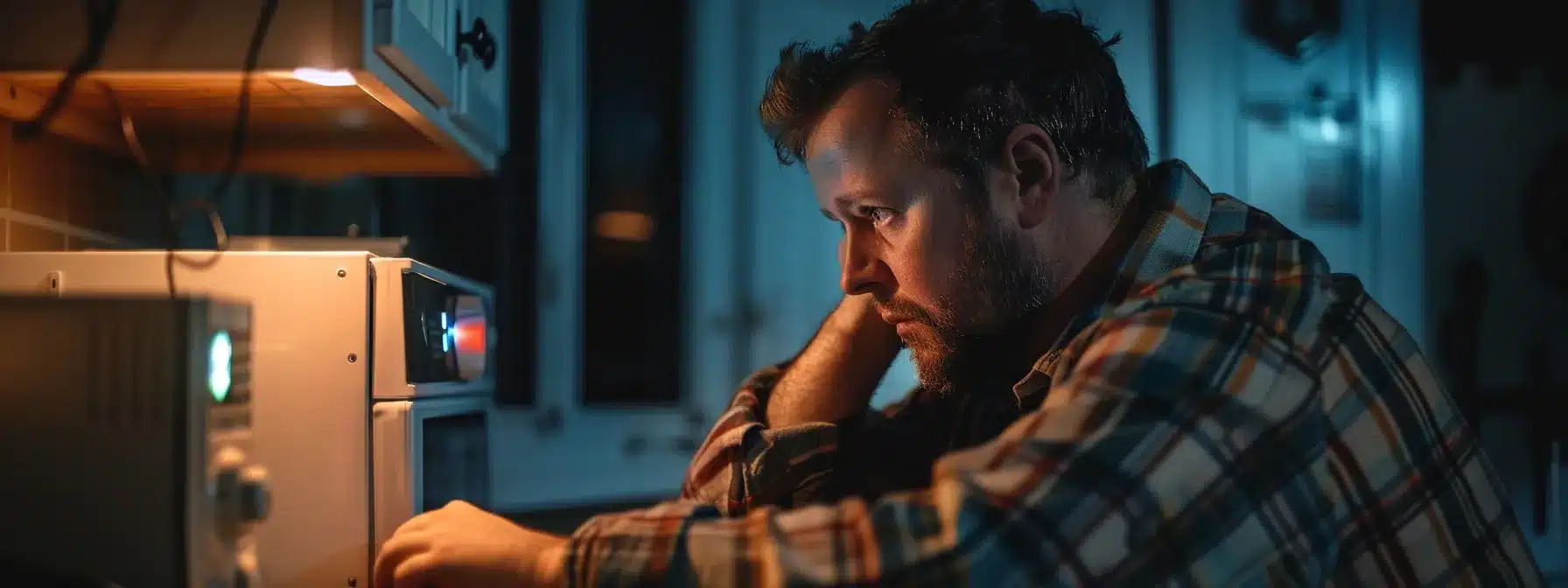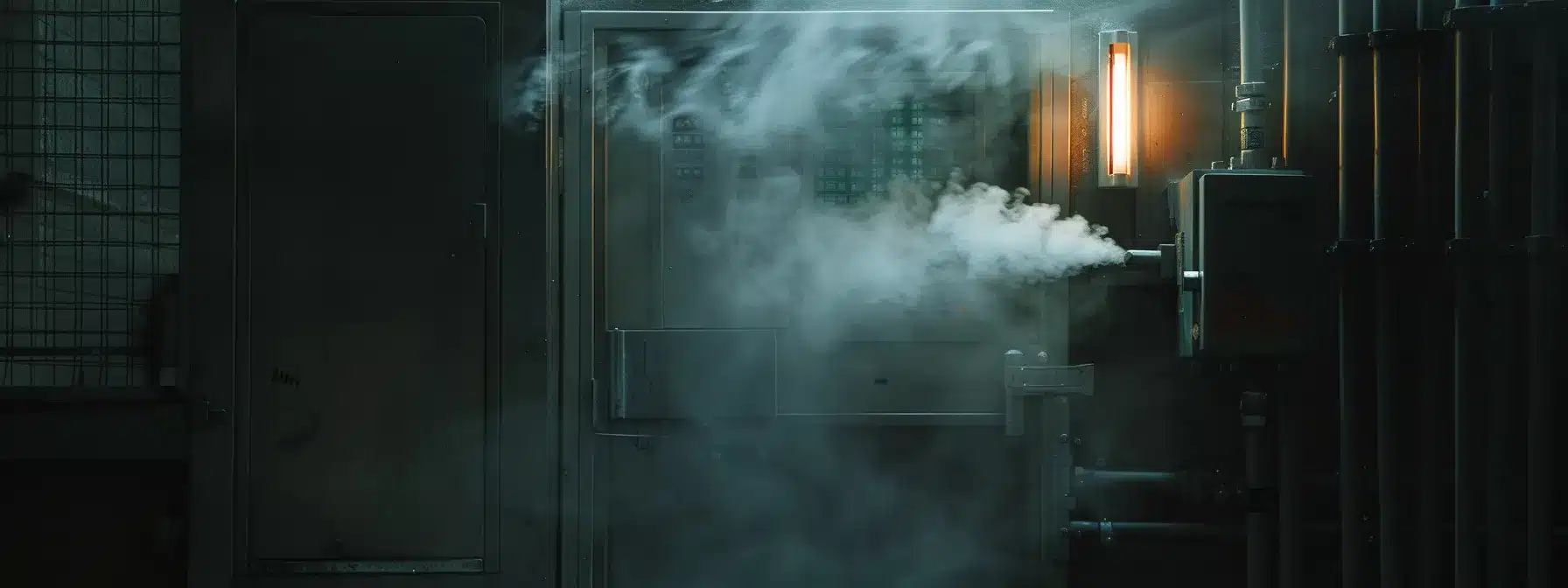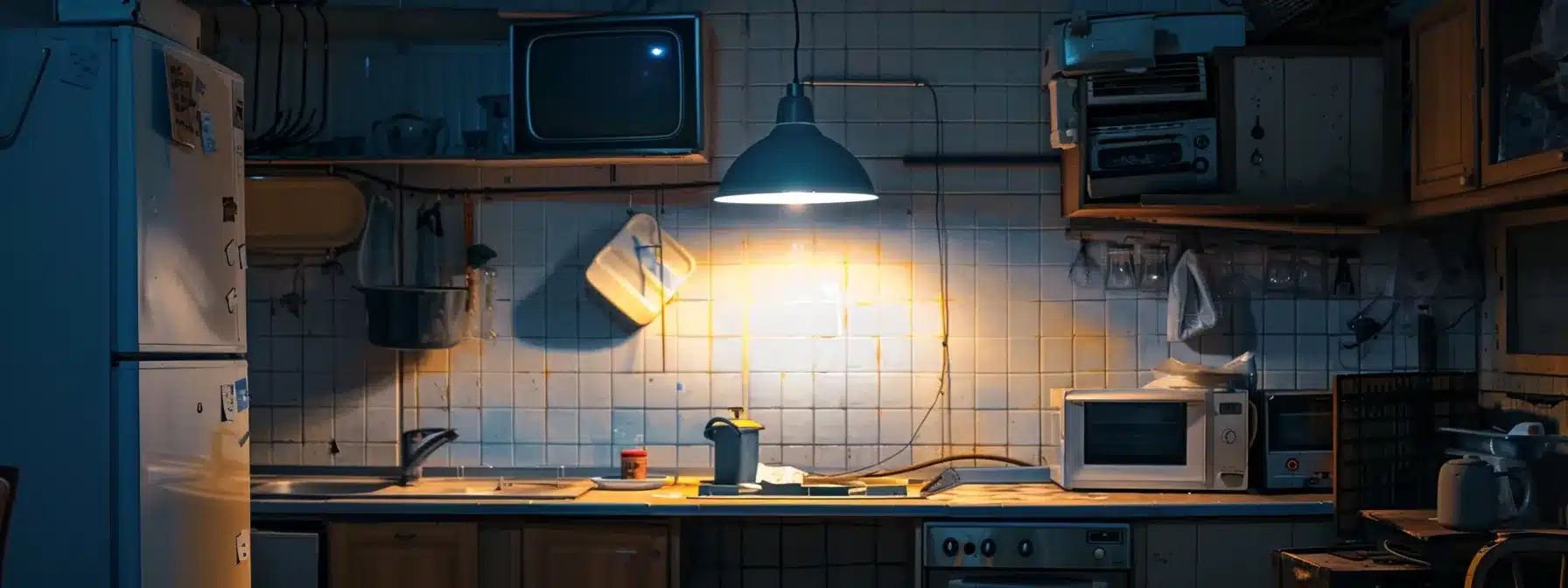Circuit breakers play a vital role in keeping a home safe and powered. When there’s a failure, it can lead to unexpected power outages and even present hazards in your home. Knowing the signs of a bad circuit breaker is crucial, especially if you need to call an emergency electrician. While a multimeter can help with diagnostics, some signs are more obvious and demand immediate attention. If your circuit breaker is tripping often or you notice a burning smell coming from the electrical panel, those are red flags you can’t ignore. Poorly performing appliances and visible damage can indicate serious issues too. Keep reading to learn more about these warning signs and how to address them before they become bigger problems.
Key Takeaways
- Frequent breaker trips may indicate overload or other underlying electrical issues needing attention
- Burn marks or unusual smells around breakers signal overheating and potential fire hazards
- Aging circuit breakers, older than ten years, should be inspected for safe operation
- Flickering lights can suggest loose connections or faulty breakers requiring immediate professional help
- A hot breaker is a serious warning sign and should prompt immediate electrician consultation
How to Tell if Your Circuit Breaker Is Bad

Identifying a bad breaker can be straightforward if homeowners know what signs to look for. A circuit breaker that frequently trips is often the first indication of trouble. This can indicate that the breaker is overloaded, meaning it cannot safely handle the power supply it’s controlling. In these situations, it’s important to contact an emergency electrician for immediate assistance.
Another common sign of a bad breaker is a visible burn mark or charred area on the breaker itself. This type of damage suggests that the breaker has been subjected to excessive voltage, which can lead to a fire hazard. If such marks are present, it’s time to call an electrician to assess the situation.
Inconsistent power flow is also a strong signal that something may be off with the circuit breaker. Homeowners might notice flickering lights or appliances that don’t run smoothly. Such fluctuations can indicate that the breaker is failing to maintain a steady connection with the power supply.
Listening for unusual sounds can also help pinpoint a bad breaker. A buzzing or crackling noise coming from the breaker box may mean the electrical connections are loose or that the breaker itself is damaged. Ignoring these sounds can be risky, so getting an electrician involved is a smart move.
Lastly, if a circuit breaker feels hot to the touch, that’s a major red flag. Breakers should operate at a regular temperature, and excessive heat often means that a bad breaker is struggling to manage voltage properly. Homeowners experiencing this should have a professional take a look right away:
If you suspect your circuit breaker is causing trouble, you’re not alone. Let’s uncover the four telltale signs that mean it’s time to take action!
4 Signs That You Have a Bad Circuit Breaker

When it comes to keeping electrical systems running smoothly, a little knowledge can go a long way. Homeowners should be attentive to signs that their circuit breaker might be on the fritz. For instance, frequent breaker trips can indicate a machine that’s struggling under too much load. Additionally, flickering lights can be a straightforward indicator of underlying issues. Power fluctuations also create discomfort, making it tough for appliances to work properly. Lastly, the age of a circuit breaker or the entire electrical panel is crucial; older equipment may need a thorough inspection to determine if it’s time for a replacement. Knowing these signs can help prevent more significant problems and keep everything safe and efficient.
1. Frequent Breaker Trips
Frequent breaker trips can signal an overload in the electrical system or even a failing breaker. If the circuit breaker keeps tripping, it might struggle to handle the electric power demand from connected devices. Homeowners may want to consider troubleshooting the issue, as continual trips may mean the breaker is working harder than it should.
Sometimes, a breaker may trip because of overheating. If a homeowner notices an unusual odor coming from the breaker box, it’s essential to address it immediately. Consulting an electrical contractor can provide peace of mind, as these professionals can help identify dangerous situations before they escalate into a larger issue.
Inconsistent power flow can create major frustration, especially when it disrupts daily life at home or at work. Frequent trips should not be brushed aside; instead, they warrant serious attention. Ignoring these signs can lead to bigger electrical problems down the line:
- Notice unusual smells or signs of overheating.
- Keep an eye on the frequency of breaker trips.
- Consider having an electrical contractor inspect your system.
- Be proactive with troubleshooting before minor issues become major headaches.
2. Lights Flicker
Flickering lights can be a clear signal that something isn’t quite right with the electrical system. Often, this issue roots from problematic wiring or a faulty fuse. Homeowners should pay attention to how frequently this occurs, as malfunctioning electrical wiring may require immediate attention.
Sometimes, flickering lights occur when there are loose connections in the circuit, which can also indicate that the ground wire is not connected properly. This could lead to more serious electrical issues down the road if not dealt with quickly. Calling an electrician for an emergency service might be the best choice to avoid any potential hazards.
It is important to recognize that flickering lights can affect not just comfort but safety, too. If they happen repeatedly, it’s best for homeowners to seek out professional help. Ignoring this sign could result in more troubling electrical problems, prompting the need for significant repairs down the line:
3. Power Fluctuates
When homeowners notice that their power fluctuates, it’s usually a sign of an underlying electrical fault. This inconsistency can create issues with appliances, causing them to underperform or even break down. If the energy supply feels unreliable, it’s wise to investigate further to avoid any risk of a short circuit.
Fluctuating power can also affect light fixtures, with lights dimming or brightening unexpectedly. This not only disrupts daily activities but can also be hazardous. If homeowners keep encountering this issue, they should treat it as an emergency and reach out to a qualified electrician to analyze the electrical system.
Regular power fluctuations might indicate an overloaded circuit or improper wiring. The wiring could struggle to keep up with energy demands, which can quickly escalate into more serious issues. Homeowners should stay alert for these signs and not wait until something goes wrong to get an expert opinion:
4. Age of Circuit Breaker and Electrical Panel
The age of a circuit breaker and electrical panel plays a significant role in their overall performance. Breakers have a lifespan, and older ones may not regulate high voltage as effectively as they should. Homeowners should consider evaluating these components if they’re hitting the decade mark or more.
As circuits age, they become more susceptible to wear and tear, which can hinder their ability to handle electrical currents. When electrons have a tough time flowing due to an outdated panel, it can lead to unexpected tripping or overheating. Keeping an eye on the age can save homeowners from potential hazards down the line.
A proactive approach to electrical safety means recognizing that if a circuit breaker or panel is older, it might be time for an upgrade. Newer models can manage high voltage with much more efficiency and safety. Consulting an electrician about the right replacement options can ensure the home’s electrical system runs smoothly and safely.
Identifying a faulty circuit breaker can save you time and money. Let’s uncover the noticeable signs that might point to trouble in your electrical system!
What Are the Noticeable Signs of a Bad Circuit Breaker?

Being aware of common circuit breaker failure signs can help homeowners tackle electrical issues before they escalate. Physical damage like burn marks or charred areas can indicate serious problems. Breakers that trip frequently may suggest an overload, while those that won’t stay reset are likely struggling to keep up with circuit demands. A burning smell in the electrical panel is a serious warning and shouldn’t be ignored. Old circuit breakers might not handle current demands as effectively as newer models, which can lead to trouble. Finally, if a breaker becomes excessively hot, that’s a clear sign it’s time to have the situation evaluated. Paying attention to these signs can help ensure a safer and more reliable electrical system.
Physical Visible Damage
Visible damage on a circuit breaker can quickly signal trouble ahead. Homeowners should look out for any burn marks or discoloration on the breaker itself. Such signs point to overheating and may indicate that the breaker has been under too much stress.
Another notable sign of physical damage is cracks or breaks in the plastic casing of the breaker. These imperfections can compromise its safety and functionality. If a person notices any physical damage, it’s wise to address it sooner rather than later.
Physical signs of failure can be serious, so knowing what to watch for is key. Monitoring the condition of circuit breakers could prevent power interruptions and potential hazards. Homeowners should keep an eye on the following signs of visible damage:
- Burn marks or discoloration on the breaker
- Cracks or breaks in the casing
- Unusual smells around the breaker area
Breakers Tripping Frequently
Frequent tripping of circuit breakers is often a telltale sign that something isn’t quite right. This can happen when the electrical load exceeds the breaker’s capacity, leading it to trip as a safety measure. Homeowners should pay close attention if the breaker keeps flipping on a regular basis.
Sometimes, a circuit breaker trips because of old age or wear and tear. If it has been in use for several years, it might simply be struggling to do its job. Regular monitoring can help catch these issues early before they escalate into more costly repairs.
If homeowners notice their circuit breaker tripping more frequently than it should, they should consider a professional inspection. Getting an expert opinion can help pinpoint whether the problem lies with the breaker itself or with a greater underlying issue in the electrical system. Addressing these symptoms promptly can help maintain a safe and efficient home:
- Monitor how often the breaker trips.
- Check the age of the circuit breaker.
- Get a professional assessment if issues persist.
Breaker Will Not Remain Reset
When a circuit breaker won’t stay reset, it can raise some red flags for homeowners. This issue often indicates a serious underlying problem, such as a fault in the wiring or that the breaker itself has reached the end of its life. It’s essential to address this promptly, as continuing to reset it could lead to more damage or even a fire hazard.
Homeowners might find that after resetting the breaker, it immediately trips again. This behavior typically points to an overload on the circuit or a short circuit somewhere in the system. Ignoring this issue or assuming it’s just a minor glitch can turn into a bigger headache down the road, so seeking professional advice is highly recommended.
A breaker that won’t stay reset can also mean the electrical load is too high for the existing setup. This situation might call for a total reevaluation of how electricity is distributed in the home. It’s best for homeowners to consult a licensed electrician to analyze the situation and offer a solution that keeps everything running smoothly and safely.
Burning Smell in the Electrical Panel
A burning smell coming from the electrical panel is more than just a nuisance; it’s a serious warning signal. Homeowners experiencing this should take immediate action since it often suggests that wires or components are overheating. Ignoring such odors can lead to electrical fires or significant damage to the system.
Breaker Has Old Age
A circuit breaker doesn’t last forever, and its age can significantly impact performance. Homeowners should be aware that breakers typically have a lifespan of around 10 to 30 years. When they reach the end of this period, they may begin to struggle with the demands of modern appliances and electronics.
As time goes by, the internal components of a breaker may weaken or wear out. Older breakers may not trip as effectively, which can lead to dangerous situations like overheating or potential fires. Homeowners will want to treat any aging breaker with caution and consider a replacement if it shows signs of deterioration.
Checking the age of the circuit breaker is an essential part of regular home maintenance. If a homeowner finds that their breaker is over a decade old, it’s probably time to consult a licensed electrician. By staying proactive about electrical system upkeep, homeowners can protect their property and ensure safe living conditions:
- Breakers have a lifespan of 10 to 30 years.
- Older breakers can struggle to handle current demands.
- Regular checks can help determine if a replacement is necessary.
Breaker Gets Excessively Hot
If a breaker starts to feel excessively hot, it’s a clear red flag that something isn’t right. Circuit breakers are designed to operate within a specific temperature range, and rising heat often indicates an overload or malfunction. Homeowners should pay close attention to this warning sign to avoid serious electrical issues.
Continuing to use a hot breaker can lead to damage not only to the breaker itself but also to the wiring and devices connected to it. Overheating can create a dangerous situation, potentially resulting in electrical fires. As soon as homeowners notice their breaker getting too warm, it’s a good idea to call a licensed electrician to investigate the situation.
Addressing a hot breaker promptly can save homeowners from hefty repairs down the line. Identifying the cause of the heat, whether it’s high load demands or faulty connections, allows for effective solutions. Staying aware of how electrical systems function contributes to a safer living environment:
- Monitor the temperature of circuit breakers regularly.
- Consult an electrician if excessive heat is detected.
- Understand the potential risks of ignoring this warning sign.
A faulty circuit breaker can cause all sorts of headaches. One of the biggest red flags to watch for is when your breaker trips frequently.
Breaker Trips Frequently

When circuit breakers trip often, homeowners should take it as a serious warning. Frequent tripping usually means that the electrical load is too much for the breaker to handle. This can lead to frustration and can signal deeper issues that need immediate attention.
Sometimes, a breaker will trip because of too many devices running on one circuit. If a homeowner notices that certain appliances or lights trigger the trips, they might need to rearrange their setup. Calling an electrician can help clarify what’s causing the overload and what steps to take next.
A breaker that trips frequently might also hint at wear and tear. Over time, breakers lose their ability to manage voltage effectively. An aging breaker may not trip when it should, creating a potential fire hazard if left unchecked.
Additionally, homeowners should pay attention to any unusual smells or sounds coming from the breaker box. These signs could indicate that the breaker is overheating or malfunctioning. Seeking professional help is crucial before the situation escalates into a more dangerous scenario.
Ignoring frequent breaker trips can lead to costly repairs down the line. It’s better to address the problem sooner rather than later. Homeowners can maintain a safer environment by staying proactive about their electrical systems.
Just when it seemed like the breaker problems couldn’t escalate, an unsettling smell sliced through the air. A burning odor wafted from the electrical panel, raising alarm bells for anyone nearby.
Burning Smell Coming From the Electrical Panel

A burning smell coming from the electrical panel is a sign that homeowners should never ignore. This distinct odor usually indicates overheating wires or components, which can lead to dangerous situations.
If a homeowner detects this smell, they should immediately turn off the power supply to the panel. It’s critical not to investigate further without professional assistance, as the heat can result in electrical fires.
The burning smell often stems from overloaded circuits, faulty wiring, or aging electrical components that are failing. When these issues arise, the risk of serious damage increases dramatically.
Responding promptly is key to maintaining safety. Homeowners should consult a licensed electrician who can pinpoint the exact cause and recommend necessary repairs or replacements:
- Turn off the power supply immediately.
- Avoid investigating further without help.
- Call a licensed electrician to assess the situation.
In any case, taking action when noticing a burning smell can prevent larger issues down the line. Keeping a close eye on the electrical system ensures a safer environment for everyone in the home.
As the burning smell lingers, homeowners start noticing their appliances acting up and lights flickering like they’re having a dance-off. It’s a clear sign that electrical issues are creeping in, creating chaos in every corner of the house.
Poorly Performing Appliances and Light Fixtures

Poorly performing appliances and light fixtures can often point to issues with the circuit breaker. When appliances operate erratically, it may suggest that the breaker isn’t supplying consistent power. This inconsistency can lead to frustrating disruptions in daily life.
If appliances start to malfunction or do not turn on at all, that’s another sign. It may mean that the circuit breaker isn’t providing the necessary power supply. This situation can result in all sorts of headaches and inconvenience for homeowners.
Regularly monitoring appliance performance leads to quicker problem-solving. Addressing these concerns early can prevent larger electrical issues down the road. Homeowners should keep an eye out for excessive wear on devices, as this can happen due to insufficient power.
When any of these signs occur, it’s vital to consult a licensed electrician. They can easily assess the situation and ensure that the circuit breaker operates reliably. Ignoring these symptoms can lead to bigger problems later:
- Dimming or flickering lights.
- Appliances malfunctioning or failing to operate.
- Excessive wear on devices due to inconsistent power supply.
When appliances and light fixtures start acting up, it can lead to bigger problems lurking beneath the surface. One common issue is a circuit breaker that just won’t stay reset, adding more frustration to your electrical woes.
Breaker Fails to Stay in Reset Mode

When a circuit breaker fails to stay in reset mode, it raises some significant concerns. This issue often indicates deeper problems within the electrical system, such as a wiring fault or an overworked breaker. Homeowners should never ignore this signal, as repeated resets could lead to dangerous conditions.
A circuit breaker that trips immediately after being reset can point to an overload or short circuit. This behavior suggests that the electrical demands exceed what the breaker can handle safely. Homeowners should take this seriously and seek professional help to identify the underlying cause.
Frequent reset failures can create frustration in daily life. It’s inconvenient when power keeps cutting out or appliances suddenly stop working. A licensed electrician can help pinpoint the issues causing these disruptions and provide solutions that restore stability to the electrical system.
If homeowners continue to reset a breaker without resolving the problems, they may put their safety at risk. The potential for electrical fires increases when underlying faults go unchecked. It’s vital for homeowners to understand that timely attention can prevent further damage and ensure the home’s electrical safety.
Staying aware of a circuit breaker that won’t stay reset can lead to better home maintenance and safety. Regular checks on the breaker’s performance can save homeowners from future headaches and costly repairs. Consulting an electrician for an inspection can clarify the situation and lead to effective solutions:
When the breaker fails to stay in reset mode, it’s a clear sign that something’s not quite right. Keep an eye out for visible signs of physical damage, as they could lead to bigger problems down the line.
Visible Signs of Physical Damage

Homeowners should keep an eye out for visible signs of physical damage on circuit breakers. Burn marks or discoloration on the breaker can indicate overheating, suggesting that it has been exposed to excessive current. Such damage often signals that it’s time to investigate further and address potential issues.
Cracked or broken plastic casings are another important sign of trouble. These imperfections can compromise the breaker’s safety, making it less effective at controlling electrical flow. If a homeowner notices physical damage, it is wise to take action before it leads to more significant problems.
Unusual smells coming from the breaker area can also hint at physical damage. A burning or acrid odor often suggests that something is overheating or malfunctioning. Homeowners should take these smells seriously and not ignore them, as they could indicate a dangerous situation.
The presence of rust or corrosion around the breaker can further signal that something’s not right. These signs of wear and tear show that moisture may have found its way into the electrical box, putting the breaker’s integrity at risk. Regular inspections can help catch these issues early and maintain a safe electrical system.
Knowing what to look for when inspecting circuit breakers is essential for every homeowner. Monitoring visible signs of physical damage can prevent bigger electrical issues from arising down the line. Staying proactive about electrical safety leads to a more reliable and secure home environment.
Spotting visible damage is just the beginning. Now, let’s turn our attention to those aging circuit breakers that may be lurking behind the scenes, ready to cause trouble.
Aging Circuit Breaker

Homeowners often overlook the age of their circuit breaker, but it’s crucial to keep an eye on how long the breaker has been in service. Typically, a circuit breaker lasts anywhere from 10 to 30 years, depending on its use and condition. A breaker approaching the 10-year mark may need a more thorough inspection to ensure it still functions safely.
As circuit breakers age, their internal components can start to fail. This decline may lead to a rash of trips or even a complete inability to handle the electrical load. Homeowners should pay attention, especially if the breaker begins to trip more frequently than it used to.
Old breakers may not trip when they should, increasing the risk of overheating or electrical fires. If a homeowner notices erratic behaviors from appliances or flickering lights, the age of the breaker could be a significant factor. Ignoring these signs can lead to bigger headaches further down the road.
Updating an aging circuit breaker can improve overall safety for the entire electrical system. Newer models boast greater efficiency and reliability, making them far better suited to handle today’s advanced electrical demands. Homeowners who recognize an older breaker should consult an electrician to discuss replacement options.
Being proactive about a breaker’s age can save homeowners time and money in the long run. Regular checks on the breaker’s performance can help avoid shockingly high repair costs later. Staying vigilant keeps the home’s electrical system running smoothly and safely.
Conclusion
Homeowners must stay alert to common circuit breaker failure signs to ensure electrical safety. Frequent trips, burning smells, flickering lights, and visible damage can indicate serious issues. Addressing these signs promptly can prevent escalating problems and keep the home’s electrical system running smoothly. Regular inspections and consulting a licensed electrician can lead to safer and more reliable electrical conditions.

